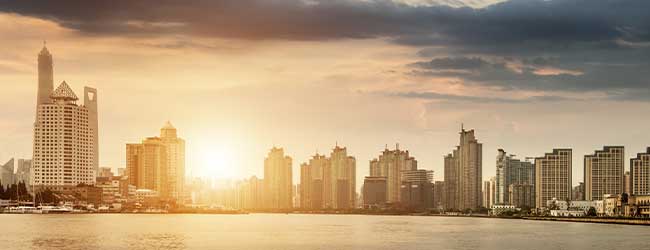Wed, May 6, 2020
In Discussion With Thought Leaders: COVID-19 Impact on the Indian Economy

In this edition, we bring to you a freewheeling fireside chat between S. Sriniwasan (Srini), CEO – Kotak Investment Advisors and Pratik Sengupta, Director Alternative Asset Advisory, Duff & Phelps.
Pratik – Please share your views on the potential impact of COVID-19 on the Indian economy. Please share some guidance on the rural, urban and semi-urban economies. According to your assessment, which one would be impacted the most?
Srini –
The economic impact of COVID-19 will be observed across sectors and in every corner of this country.
For the rural economy, the lockdown has led to a lack of availability of human resources for regular agricultural activities, which is affecting the current harvesting process and will impact the sowing of summer crops. The second-order impact will also be observed for industries associated with the production of seeds, fertilizers and related products.
For the urban economy, the comparative impact of COVID-19 will be lesser, as the services sector would see a moderately low impact. However, the impact will be more pronounced for hospitality and tourism.
Pratik – We have recently seen unprecedented levels of human migration across the country. If we talk about this weaker section of the society, what do you think about their return to the mainstream economy?
Srini –
The current situation is an uncharted territory. The policy initiatives by the federal and state governments will ensure that basic necessities are taken care of.
The next phase will be to create policies and infrastructure to generate employment across the nation, including the hinterland. The instinctive reaction for migrant employees would be to work closer to their homes post COVID-19.
However, irrespective of the policy responses, the big cities will attract migrant employees, as cities will continue to be the growth engines for the country. But the reverse migration to cities could be potentially slower. The key factor could be the confidence in the overall economy.
Pratik - That brings us to two key sectors: real estate and infrastructure, where the dependence on migrant laborers is significantly high. What is your opinion on the future of the real estate sector?
Srini –
Real estate is a two-part story and the impacts will differ for residential and commercial assets.
The government has announced fiscal incentives for the residential real estate sector, including moratorium on payment of EMIs and reduction in the savings rate. These are steps in the right direction; along with policies around affordable housing and tax deductions, this will incentivize potential home buyers.
However, the perceived challenges like reduction in salaries and loss of employment could impact the confidence of a potential home buyer. Also, the cost of renting a residential property is very low at around 2% to 2.5% per annum of the capital value, which provides more incentive to rent than buy.
Overall, the above factors will negatively impact the residential real estate sector.
For commercial real estate, remote work is a headwind for the sector, as it can impact occupancy in the near and medium terms.
International companies may face pressure in their home countries to create and retain jobs locally. It will be good to keep an eye on the policies foreign governments are creating; these may impact the outsourcing of jobs to India.
Pratik – What is your view on infrastructure, given that the government announced several projects over the past few years and these projects were attracting foreign capital through National Investment and Infrastructure Fund (NIIF)?
Srini –
Global investors in infrastructure assets will compare investment opportunities across markets and will only commit to invest in a good quality asset. Additionally, the investment thesis for Indian assets will be impacted by the consistent depreciation of the Indian rupee against the U.S. dollar.
Also, a few key investors are from oil exporting countries and they may have their own domestic monetary obligations to meet. For example, the Sovereign Wealth Fund of Norway had to sell some of its holdings recently. Hence, there will be a slowdown in capital commitments from global investors.
We need to find ways to finance our infrastructure-related CAPEX and the government should spend aggressively in infrastructure assets. This will also positively impact the consumption of steel, cement and other construction-related consumables, apart from creating employment for the economically weaker section. I hope that policymakers will go beyond doing what they have done so far.
Pratik – What do you think is the mood of the Limited Partners, especially towards the funds that are ‘2012-13 vintage’ and didn’t earn multibagger returns during this period?
Srini–
The short-term investors may withdraw from the Indian market. The longer-term investors have invested in setting up teams and are engaged at multiple levels with policymakers and stakeholders. These investors are going to stay put and many of them will look at the current situation as an opportunity to invest in high quality assets with good management at attractive valuations over the next 12 to 24 months.
The current situation is negative for vintage funds that are at least five years old and that were expecting or planning an exit through public market offerings of their investments. The only available exit now is through private markets and the current economic condition will impact the valuations and potential returns negatively. Investors in airlines and hotels may need to take a bigger hit, as the valuations for these assets take longer to recover.
For new funds, the current situation is positive as new fund managers have raised massive amount of capital in the recent past and these funds are yet to be fully deployed. The secondary funds, which will provide exits to vintage funds, will find investments or portfolios of investments at attractive prices due to the current situation.
Pratik – What could be some potential balance sheet challenges?
Srini –
The balance sheet challenges have been there for a while and will accelerate. There were improvements in January and February this year, but it will become worse moving forward.
The two key fundamental challenges for banks are the incremental risk of higher non-performing assets (NPA)and raising capital from external sources. As more borderline accounts under observation will turn into NPAs, the banks will require more capital infusion to manage their balance sheets. Simultaneously, banks will be expected to deploy capital to kick-start the economy.
The over leverage will continue to be a challenge. The availability of credit will be an issue despite whatever the Reserve Bank of India has done to support banks and financial institutions. The government needs to introduce new policies which will make the economy more attractive and efficient.
Pratik – Do you foresee any governance issues and hindrance in capital flow due to such bad practices?
Srini –
I see a silver lining with the discoveries of governance issues observed in the past with IL&FS, Yes Bank and DHFL. There were challenges with the system, and they are out in the open now. Going forward, some minor NBFCs may face some issues, but those will be rather small deviations than a threat to the overall system.
The actions taken by the government were effective in communicating a message to the wider audience that there will be no tolerance towards poor corporate governance practices.
It’s important to understand that organizations cannot prevent a few instances of bad behavior, but now there are enough checks and balances in place to disincentivize any such actions. Companies with poor management and governance issues will suffer in the current economic environment.
Pratik – This brings us to another potential challenge to the Indian economy. What is your take on the probable reactions from the importers and consumers of Indian products and services due to the COVID-19 impact on their economies? Also, do you see any potential protective measures from India’s key trade partners?
Srini –
The recent depreciation in the rupee has made exports more competitive. The larger issue is how to deal with the changes and challenges that may evolve from international trade mechanisms and potential new policies to support the domestic economies among India’s key trade partners.
International trade is going to undergo dramatic changes with the revisions of past trade relations. More bilateral relationships, with emphasis on surety and de-risking of supply chain, will be observed. The recent action taken by the Japanese government to ask some Japanese companies to move out of China is one such measure. This type of re-arrangement and alignment of trade relations is a great opportunity for India. But India’s success will depend on labor and land reforms. Labor and land issues make India an uncompetitive economy for any manufacturing activity compared to other competitors.
Pratik – This brings us to our final question. What is your estimated timeline for India to cope with COVID-19, both pessimistically and optimistically, to get the economy back on track?
Srini –
I am a compulsive optimist. I hope the entire issue will be over by June and the aim should be to bring manufacturing and production back on track by August-September. This will restore people’s confidence in the economy. The key barometer for the economy will be the festival sales in September and October, which will be the best indicator of how we will come out of this. I am hopeful that by the second half of this year, we would have put all of this behind us, and the government will provide the necessary support.
Valuation Advisory Services
Our valuation experts provide valuation services for financial reporting, tax, investment and risk management purposes.

